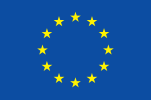 Technologies and know-how were developed to create a “MESO_BRAIN”: A 3D functional neuronal network unit based on the structure of a cortical column module involving a designed network scaffold that can be reproducibly manufactured, with defined neuronal cell placement and connectivity resulting in a functional human neuronal network that displays in vivo activity patterns.
Technologies and know-how were developed to create a “MESO_BRAIN”: A 3D functional neuronal network unit based on the structure of a cortical column module involving a designed network scaffold that can be reproducibly manufactured, with defined neuronal cell placement and connectivity resulting in a functional human neuronal network that displays in vivo activity patterns.
Prototype scaffolds are produced to early adopter researchers to test their applicability and utility. Laser nanoFab GmbH prepares for production of 3D cortical column scaffolds and to make them widely commercially available. Their physiological attributes and consistent network architecture will enable scientific and medical researchers to use them immediately for a variety of studies e.g. in fundamental mechanisms of human derived neural activity and as a platform to test pharmacological and toxicological compounds.
We expect that networks utilising iPSCs derived from Alzheimer’s and tauopathy patients will be available for investigation of functional deficits linked to disease progression and the testing of putative therapeutic agents. Similar studies will be possible with neurons derived from other brain areas such as basal ganglia Dopaminergic neurons and networks for Parkinson’s disease study, temporal lobe networks for epilepsy study and spinal networks.
We expect that pharmaceutical companies will be using 3D-networks incorporating normal healthy and diseased cells along with the developed interrogation methods to test pharmaceutical therapies on a large scale and using iPSC derived neurons from individual patients for bespoke therapeutic testing for rare disease soon. We also expect to develop networks based on other biocompatible-biodegradable substrates that may be permanently integrated into the living brain. Within 10-15 years we expect that 3D networks derived from individual patients will be grown for re-introduction into damaged brain and spinal cord areas.

This project has received funding from the European Union's Horizon 2020
research and innovation programme under grant agreement No 851734
